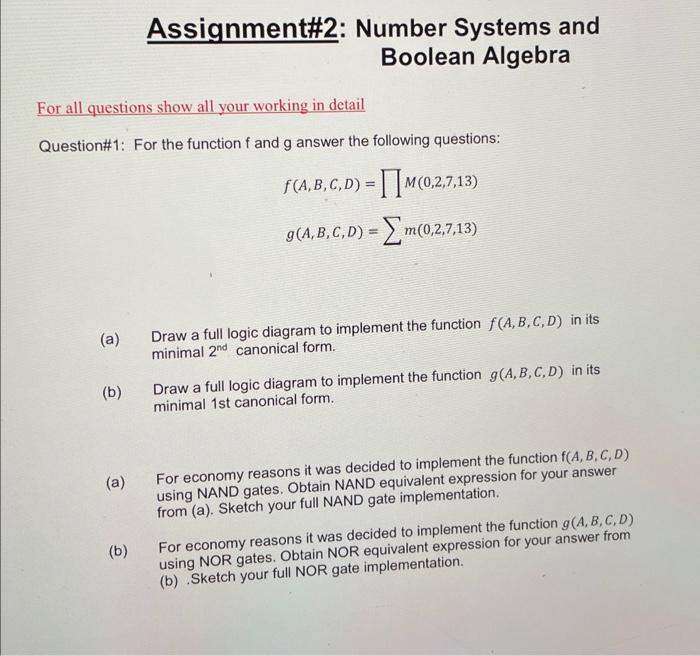Answered step by step
Verified Expert Solution
Question
1 Approved Answer
For all questions show all your working in detail Question#1: For the function f and g answer the following questions: f(A,B,C,D)=M(0,2,7,13) g(A,B,C,D) = m(0,2,7,13)

For all questions show all your working in detail Question#1: For the function f and g answer the following questions: f(A,B,C,D)=M(0,2,7,13) g(A,B,C,D) = m(0,2,7,13) (a) (b) (a) Assignment#2: Number Systems and Boolean Algebra (b) Draw a full logic diagram to implement the function f(A, B, C, D) in its minimal 2nd canonical form. Draw a full logic diagram to implement the function g (A, B, C, D) in its minimal 1st canonical form. For economy reasons it was decided to implement the function f(A, B, C, D) using NAND gates. Obtain NAND equivalent expression for your answer from (a). Sketch your full NAND gate implementation. For economy reasons it was decided to implement the function g (A, B, C, D) using NOR gates. Obtain NOR equivalent expression for your answer from (b) .Sketch your full NOR gate implementation.
Step by Step Solution
★★★★★
3.40 Rating (175 Votes )
There are 3 Steps involved in it
Step: 1
B B D D B 1 a fA B C D TM 0 and Canonical form A B Too M13 7 ie f A B Cn M M M M 3 TTM 0 ...
Get Instant Access to Expert-Tailored Solutions
See step-by-step solutions with expert insights and AI powered tools for academic success
Step: 2

Step: 3

Ace Your Homework with AI
Get the answers you need in no time with our AI-driven, step-by-step assistance
Get Started


